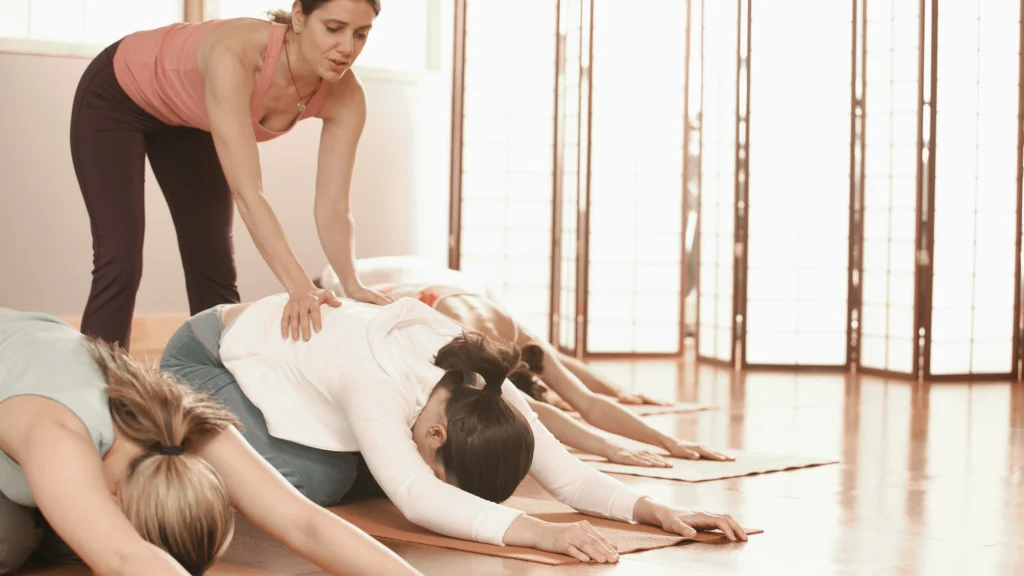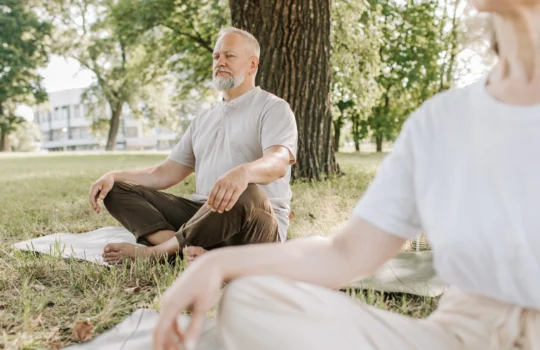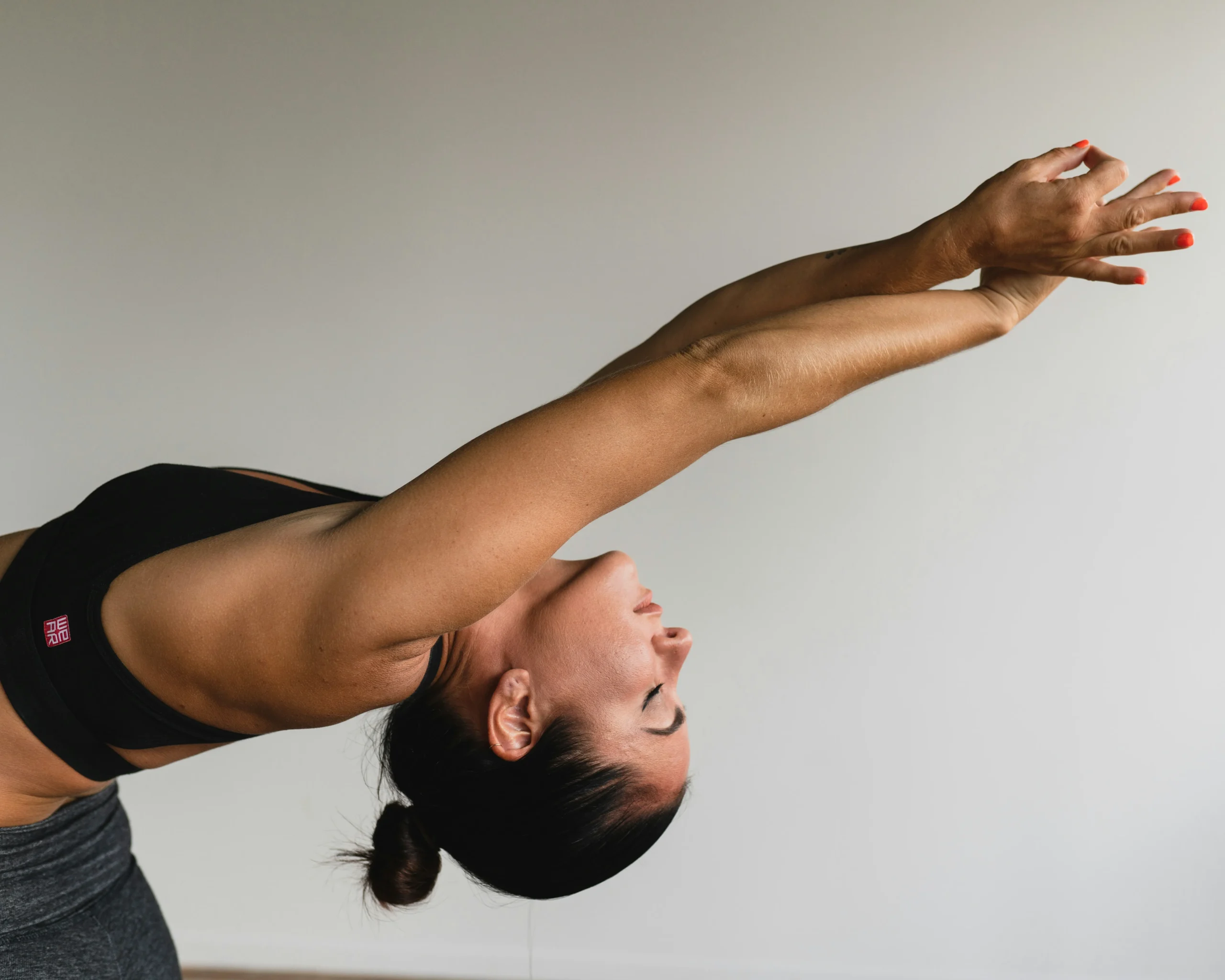The Untold Truths of Being a Yoga Instructor
Picture this: you’re leading a serene morning class, the sun’s just beginning to rise, casting a gentle glow through the windows. Your students are in perfect harmony, and you? You’re the epitome of calm, cool, collected—basically, the yoga instructor everyone aspires to be. Sounds pretty idyllic, right? Well, hold onto your yoga mats, because there’s a whole lot more to this dream job than just nailing the perfect downward dog.
While being a yoga instructor can be as blissful as a deep savasana, there are a few things that only those on the inside know. From the brutally early mornings that will test your love for all things zen, to the surprising emotional rollercoaster rides you’ll take with your students—there’s a side to this path that’s seldom talked about.
So, whether you’re thinking of stepping onto the mat as a leader or you’re just curious about the behind-the-scenes, stick with us. We’re diving deep into the top nine things no one tells you about being a yoga instructor that will have you saying, “Wait, what? No one told me that!”
Table of Contents
1. The Early Mornings Can Be Brutal
If you think being a yoga instructor means leisurely starting your day with a latte and a gentle stretch, think again! For many instructors, the alarm clock buzzes way before the crack of dawn. Why? Because those sunrise yoga sessions that look so dreamy on Instagram actually start when most people are still hitting snooze.
Imagine rolling out of bed while it’s still dark outside, trying to summon the energy to be the beacon of peace and flexibility. Yes, you’re expected to radiate positive vibes and guide your sleepy-eyed students through their sun salutations when you might just want to curl up under a cozy blanket yourself.
But hey, don’t let the early wake-up calls scare you off! Embracing these brisk mornings can actually be a rewarding challenge. They teach you discipline and, let’s be honest, watching the sunrise from your yoga mat can be pretty magical. Plus, you get your work done early and have the rest of the day to enjoy. So, how do you make these mornings less brutal? Try preparing everything you need the night before, stick to a consistent sleep schedule, and yes, that magical morning coffee can be your best friend. Remember, it’s all about finding your rhythm and making peace with the early bird lifestyle!
2. Your Own Practice Takes a Back Seat

Let’s spill the tea—becoming a yoga instructor doesn’t automatically mean your personal yoga practice will hit new heights. In fact, it’s kind of like that old saying about the cobbler’s children having no shoes. Sometimes, teaching yoga means your own practice might just shuffle to the back of the bus while you focus on your students.
When you’re spending hours planning classes, aligning poses for beginners, and making sure everyone in your class is keeping up without straining something, your own time on the mat can start to look a bit neglected. It’s a tough juggle, and you might find yourself performing more demonstrations than deepening your own practice.
But don’t let this be a downer! This is actually a common phase for many yoga instructors, and it’s totally manageable. Here’s a pro tip: schedule your personal practice just like you would a class you teach. Put it in your calendar as non-negotiable “me time.” Whether it’s a quick morning session to greet the day or a full practice that you attend as a student (yes, teachers should totally take classes too!), keeping your own yoga journey alive is crucial not just for your well-being, but so you can keep inspiring your students with fresh energy and insights.
3. Emotional Labor Is Part of the Job
Strap in, future yogis, because being a yoga instructor is not just about perfecting poses and preaching peace—it’s also about plunging headfirst into a sea of emotional labor. You might be thinking, “It’s just yoga, how emotional can it get?” Well, let me tell you, it’s like being a part-time therapist in stretchy pants.
Every class you teach is not only a physical journey but an emotional odyssey for many of your students. They come to your mat carrying the weight of their day, their breakups, their work stress, and even their existential crises. And guess what? As their trusted instructor, you get to help navigate and nurture them through these choppy waters.
Handling the emotional outputs of others can be draining. You need to keep your own energies balanced while offering a shoulder (metaphorically, most times) for others to lean on. It’s about cultivating an environment where emotional expression is not only allowed but encouraged. This means sometimes, your job is less about teaching the perfect warrior pose and more about holding space for healing.
So, how do you manage this without burning out? First, acknowledge the weight of this responsibility—it’s real and it’s heavy. Then, make sure you’re replenishing your own emotional well-being. This might mean setting clear emotional boundaries, finding your own outlets for emotional release, or even seeking support from peers or a professional. Remember, taking care of your emotional health is just as important as any physical practice.
4. It’s Not All About Yoga Poses
Hold onto your mats, because here’s a reality check: being a yoga instructor isn’t all about bending into a pretzel or mastering the most elaborate poses. Nope, it’s way more complex—and interesting—than that!
Yoga is a holistic discipline that combines physical postures, spiritual growth, and profound psychological insights. As a yoga instructor, you’re not just teaching people how to stretch; you’re guiding them through practices that enhance their mental and emotional health too. This means diving deep into the realms of meditation, breathwork (pranayama), and the philosophical teachings that form yoga’s rich tapestry.
Understanding anatomy is another huge part of your role. You need to know how the human body works so you can teach poses safely and effectively. Ever heard of the sciatic nerve? You’ll need to if you want to avoid putting your students in positions that could cause them harm rather than healing.
But wait, there’s more! Psychology also plays a pivotal role. Understanding the mindset of your students can help you cater to their needs more effectively. Are they stressed? Anxious? Looking for strength or flexibility? Each class might require a different psychological approach, making your job both challenging and incredibly rewarding.
So, how do you keep up with all these aspects? Continuous learning is key. Attend workshops, read extensively, and maybe even find a mentor. Embracing the full scope of yoga will not only make you a better instructor but also deepen your own practice and appreciation of this ancient art.
5. The Importance of Business Acumen

Newsflash: being a yoga instructor isn’t just about spiritual enlightenment and flexible hamstrings—it’s also about getting down to business! Yep, if you’re dreaming of turning your passion for yoga into a full-time gig, you’ll need some sharp business skills in your yoga bag.
First things first, let’s talk marketing. In the digital age, having a savvy online presence is crucial. This means not just throwing up a couple of Instagram posts with inspirational quotes but really engaging with your community, running targeted ads, and maybe even crafting that perfect hashtag that could go viral.
Then there’s the financial side of things. Handling money might not seem very yogic, but it’s essential for keeping your yoga business afloat. From setting up budgets and managing cash flow to understanding the costs of renting space versus hosting online classes, financial literacy can make or break your yoga dreams.
And don’t forget customer service! Building strong relationships with your students isn’t just about being friendly during class; it’s also about managing bookings, handling inquiries, and sometimes dealing with complaints. Yes, even yoga teachers get complaints!
So, how do you become a yoga guru and a business whiz at the same time? Consider taking a course in business management or digital marketing. There are even specialized programs designed for fitness professionals that can give you a leg up. Remember, the more you invest in these skills, the better you’ll be able to share your passion for yoga with the world—while making sure you don’t end up doing downward dog on a mountain of debt.
6. You Will Not Always Feel Like Teaching
Let’s bust a myth right here: even the most dedicated yoga instructors don’t always leap out of bed, excited to chant ‘Om’ and do sun salutations. That’s right, there will be days when you feel more like dragging your mat to the nearest couch than to the studio. Maybe it’s the weather, maybe it’s a mood, or maybe it’s just a case of the Mondays—even yoga teachers get them!
It’s totally normal to have off days where teaching feels like the last thing you want to do. Maybe you’re feeling under the weather, emotionally drained, or just not in the zone. Whatever the reason, it’s important to recognize that you’re human and not a perpetual zen-generating machine.
So what do you do when your inner yogi is more ‘no-go’ than ‘yoga’? Here’s a secret: self-care isn’t just for your students; it’s for you too. Give yourself permission to feel those feelings without guilt. Sometimes, a little self-compassion can go a long way in recharging your batteries.
But here’s the kicker—you might need to teach anyway. When that happens, try some quick self-motivation tricks: pump up your favorite tunes, do a mini-practice to get those endorphins going, or simply remind yourself why you started teaching in the first place. More often than not, once you get moving and see your students’ faces, the energy in the room will lift you up and carry you through the session.
Remember, being a yoga instructor isn’t just about guiding others; it’s also about learning to navigate your own highs and lows with grace. And who knows? Teaching on your toughest days might just turn out to be some of your best classes ever!
7. The Impact of Social Media

Welcome to the 21st century, where being a yoga instructor means you’re just as likely to do a tree pose for Instagram as you are for an actual class. That’s right, in today’s digital age, social media isn’t just an option; it’s practically part of the yoga curriculum!
Social media can be a double-edged sword. On one hand, it’s a fabulous tool for marketing your classes, building your brand, and connecting with students (and potential students) far and wide. A well-timed post can boost your visibility, fill your classes to capacity, and even land you lucrative partnerships with wellness brands.
On the flip side, the pressure to maintain a perfect, enviable online presence can be overwhelming. You might find yourself spending more time curating your next post or capturing the perfect “casual” handstand than actually engaging with the people right in front of you. Not to mention the comparison trap—seeing other instructors’ flawless feeds can sometimes hit your self-esteem harder than a tough Vinyasa flow.
So how do you balance the benefits of social media with its potential drawbacks? Here are a few pro tips:
- Be Authentic: Share real stories, real struggles, and real successes. Authenticity resonates more than perfection.
- Set Boundaries: Decide how much time you’ll dedicate to social media each day and stick to it. Don’t let scrolling and posting eat into your personal or teaching time.
- Engage Genuinely: Use social media to engage with your community, not just broadcast to them. Respond to comments, ask questions, and create content that invites interaction.
Remember, social media should be a tool that supports your role as a yoga instructor, not the other way around. Use it wisely, and it can be a powerful ally in your yoga journey!
Read more about Yoga for Teachers: 9 Secrets to Boost Your Professional Life
8. The Unexpected Rewards
Just when you think being a yoga instructor is all about stretching, sweating, and a bit of spiritual enlightenment, think again! This job comes with some pretty amazing perks that go beyond the mat—some of which might surprise you.
First up, let’s talk about the community. As a yoga instructor, you’re not just leading classes; you’re building a tribe. The bonds you form with your students can be incredibly strong, often turning into lifelong friendships. There’s something magical about growing and learning together in such a supportive environment.
Then there’s the personal growth aspect. Teaching yoga pushes you to constantly evolve, not just professionally but personally. Every class challenges you to be present, compassionate, and patient—not only with your students but with yourself. These are skills that translate well beyond the studio, enhancing your relationships and overall approach to life.
And let’s not forget the joy of seeing transformation. There’s a profound sense of satisfaction that comes from witnessing your students achieve their goals, whether it’s mastering a tricky pose or finding peace during a tumultuous period in their lives. Knowing you played a part in their journey can be incredibly rewarding.
But here’s a sweet little bonus: as a yoga instructor, you often have the flexibility to set your own schedule. This means more control over your time than in many other professions, allowing you to balance work, play, and everything in between.
And finally, let’s not overlook the health benefits. Regularly practicing and teaching yoga not only keeps you fit but also significantly reduces stress levels. It’s like being paid to keep yourself healthy—how cool is that?
9. How to Keep Evolving as an Instructor
In the world of yoga, standing still is akin to moving backward. To stay relevant and effective as a yoga instructor, you’ve got to keep evolving, both on and off the mat. Here’s how you can continue to grow and inspire your students:
Keep Learning: The learning never stops in yoga. Whether it’s deepening your understanding of anatomy, exploring new styles, or diving into the spiritual and philosophical aspects of yoga, there’s always something more to know. Consider certifications in specialized areas like prenatal yoga or yoga therapy to broaden your teaching scope.
Attend Workshops and Retreats: These are not just for your students; they’re for you, too. Workshops and retreats are fantastic ways to network with other professionals, learn new techniques, and simply recharge your own passion for yoga.
Practice Regularly: It might sound obvious, but regular personal practice is vital. It keeps your skills sharp and gives you new insights and experiences to bring into your classes.
Seek Feedback: Be open to feedback from your students and peers. It can be tough to hear criticism, but constructive feedback is invaluable for improvement. It keeps you in tune with your students’ needs and expectations.
Innovate Your Classes: Don’t be afraid to mix things up. Use music, incorporate themed classes, or introduce occasional guest speakers or instructors to keep your sessions fresh and engaging.
By embracing these strategies, you ensure that your journey as a yoga instructor remains vibrant and your teachings continue to inspire and motivate your students.
Conclusion of Untolds of Being Yoga Instructor
So there you have it—the untold truths of being a yoga instructor. From the crack-of-dawn starts to the emotional rollercoaster, from mastering the business side to handling social media pressures, it’s a role that stretches you in every direction imaginable. But along with the challenges come incredible rewards—deep connections, personal growth, and the joy of watching your students transform.
Remember, every challenge is an opportunity to deepen your practice and enhance your teaching. Embrace it all, and you’ll not only enrich your own life but also empower others to find balance and peace on their yoga journey. Ready to roll out your mat and change some lives? Namaste, the yoga path awaits!
Don’t forget to join our tribe with a following on Instagram. You’re so welcomed here.
For further information, visit How to Become a Yoga Instructor (The Ultimate Guide + FREE PDF).







